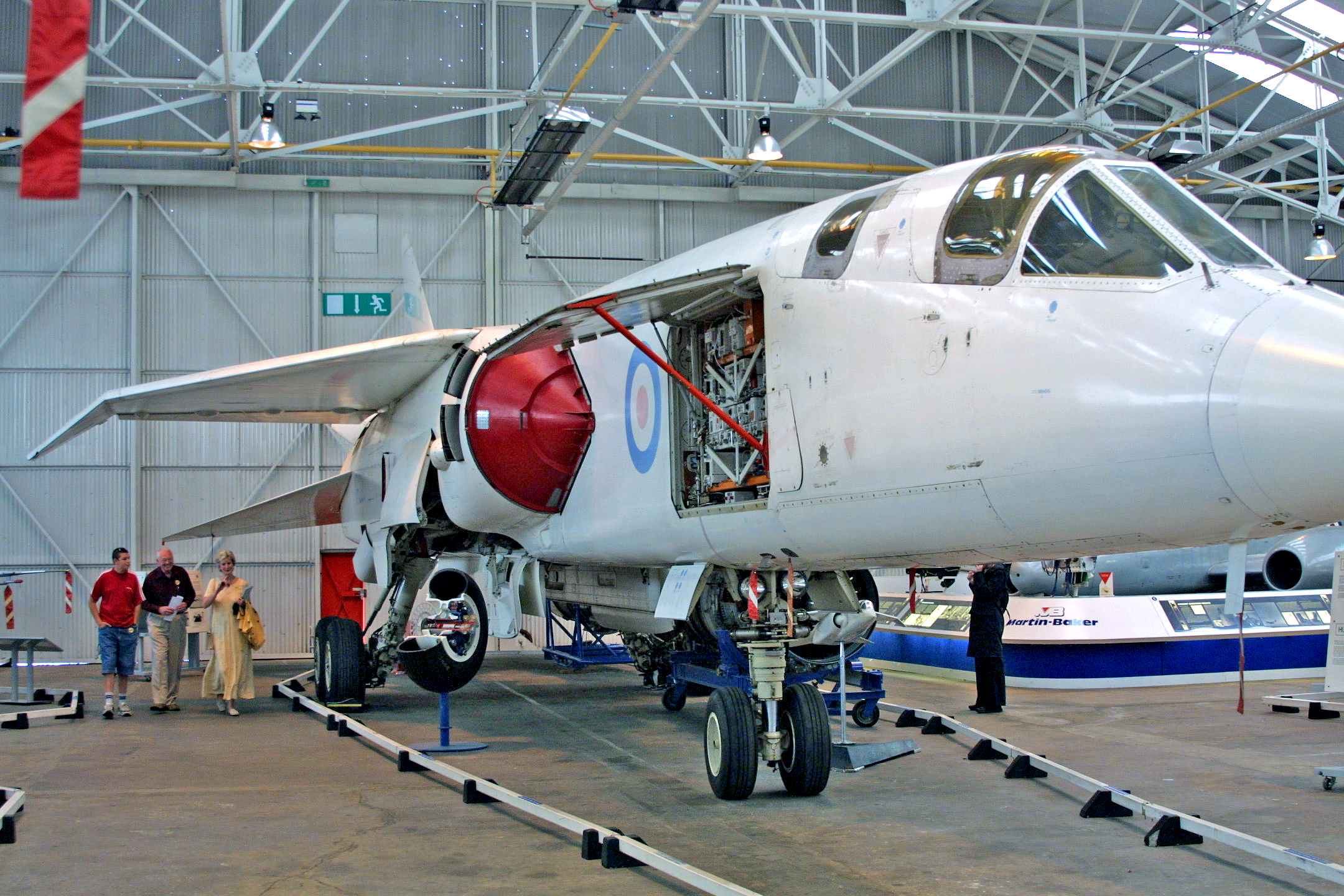|
Babur (cruise Missile)
The Babur (Urdu: بابر; Military designated: Hatf-VII, ''Translit'': ''The Cutter–7''), is an all-weather, subsonic cruise missile developed and designed by the National Defence Complex (NDC) of Pakistan. Codenamed as Babur, its development came as a surprise to the U.S. intelligence in 2005 as they had not expected the Pakistan being able to produce such a capable system, according to United States-based CSIS. After series of various data acquisition and validation trials, ''Babur'' entered first in military service of Pakistan Army in 2010, and evolved into able to launch from submarine, which saw its deployment with the Pakistan Navy in 2018. According to Pakistani military, SLCM-variant of ''Babur'' has provided Pakistan a long-sought " credible sea-based second-strike capability, augmenting existing deterrence." Development history Development on ''Babur'' came at the tense atmosphere between India and Pakistan in 1998. At that time, India was on pursuit ... [...More Info...] [...Related Items...] OR: [Wikipedia] [Google] [Baidu] |
International Defence Exhibition And Seminar
The International Defence Exhibition and Seminar, more commonly referred to as IDEAS, is a defence sector event, held biannually, in Pakistan. Since its inception by President Pervez Musharraf in 2000, it has grown to include more than 54,000 trade visitors, 290 delegates members (from 43 countries), 133 national exhibitors and 294 exhibitors from around the world in latest IDEAS 2016 held from 22 to 25 November 2016. The Pakistan government attaches a high level of importance to IDEAS; despite the fact that it attracts a large number of delegates, it is seen as a vehicle for facilitating their own indigenous arms trade. The level of political involvement has been known to reach the highest echelons, with President Asif Ali Zardari personally inviting the Amir of Kuwait Sheikh Sabah Al-Ahmad Al-Jaber Al-Sabah to the event in 2008 in order to boost the chances of Pakistan's export of its indigenously developed al-Khalid main battle tanks. The Defence Export Promotion Organisatio ... [...More Info...] [...Related Items...] OR: [Wikipedia] [Google] [Baidu] |
Associated Press
The Associated Press (AP) is an American non-profit news agency headquartered in New York City. Founded in 1846, it operates as a cooperative, unincorporated association. It produces news reports that are distributed to its members, U.S. newspapers and broadcasters. The AP has earned 56 Pulitzer Prizes, including 34 for photography, since the award was established in 1917. It is also known for publishing the widely used '' AP Stylebook''. By 2016, news collected by the AP was published and republished by more than 1,300 newspapers and broadcasters, English, Spanish, and Arabic. The AP operates 248 news bureaus in 99 countries. It also operates the AP Radio Network, which provides newscasts twice hourly for broadcast and satellite radio and television stations. Many newspapers and broadcasters outside the United States are AP subscribers, paying a fee to use AP material without being contributing members of the cooperative. As part of their cooperative agreement with the AP, most ... [...More Info...] [...Related Items...] OR: [Wikipedia] [Google] [Baidu] |
Torpedo Tube
A torpedo tube is a cylindrical device for launching torpedoes. There are two main types of torpedo tube: underwater tubes fitted to submarines and some surface ships, and deck-mounted units (also referred to as torpedo launchers) installed aboard surface vessels. Deck-mounted torpedo launchers are usually designed for a specific type of torpedo, while submarine torpedo tubes are general-purpose launchers, and are often also capable of deploying naval mine, mines and cruise missiles. Most modern launchers are standardized on a diameter for light torpedoes (deck mounted aboard ship) or a diameter for heavy torpedoes (underwater tubes), although other sizes of torpedo tube have been used: see Torpedo#Classes and diameters, Torpedo classes and diameters. Submarine torpedo tube A submarine torpedo tube is a more complex mechanism than a torpedo tube on a surface ship, because the tube has to accomplish the function of moving the torpedo from the normal atmospheric pressure within t ... [...More Info...] [...Related Items...] OR: [Wikipedia] [Google] [Baidu] |
Cruise-missile Submarine
A cruise missile submarine is a submarine that carries and launches cruise missiles ( SLCMs and anti-ship missiles) as its primary armament. Missiles greatly enhance a vessel's ability to attack surface combatants and strike land targets, and although torpedoes are a more stealthy option, missiles give a much longer stand-off range, as well as the ability to engage multiple targets on different headings at the same time. Many cruise missile submarines retain the capability to deploy nuclear warheads on their missiles, but they are considered distinct from ballistic missile submarines due to the substantial differences between the two weapons systems' characteristics. Originally early designs of cruise missile submarines had to surface to launch their missiles, while later designs could do so underwater via dedicated vertical launching system (VLS) tubes. Many modern attack submarines can launch cruise missiles (and dedicated anti-ship missiles) from their torpedo tubes while some ... [...More Info...] [...Related Items...] OR: [Wikipedia] [Google] [Baidu] |
Transporter Erector Launcher
A transporter erector launcher (TEL) is a missile vehicle with an integrated tractor unit that can carry, elevate to firing position and launch one or more missiles. History Such vehicles exist for both surface-to-air missiles and surface-to-surface missiles. Early on, such missiles were launched from fixed sites and had to be loaded onto trucks for transport, making them more vulnerable to attack, since once they were spotted by the enemy they could not easily be relocated, and if they were it often took hours or even days to prepare them for launch once they reached their new site. Usually a number of TELs and TELARs are linked to one command post vehicle (CP or CPV). They may use target information from target acquisition, designation and guidance radar (TADAGR or TAR). Transporter erector launcher and radar A transporter erector launcher and radar (TELAR) is a type of TEL that also incorporates part or all of the radar system necessary for firing the surface-to-air missil ... [...More Info...] [...Related Items...] OR: [Wikipedia] [Google] [Baidu] |
Circular Error Probable
In the military science of ballistics, circular error probable (CEP) (also circular error probability or circle of equal probability) is a measure of a weapon system's precision. It is defined as the radius of a circle, centered on the mean, whose perimeter is expected to include the landing points of 50% of the rounds; said otherwise, it is the median error radius. That is, if a given munitions design has a CEP of 100 m, when 100 munitions are targeted at the same point, 50 will fall within a circle with a radius of 100 m around their average impact point. (The distance between the target point and the average impact point is referred to as bias.) There are associated concepts, such as the DRMS (distance root mean square), which is the square root of the average squared distance error, and R95, which is the radius of the circle where 95% of the values would fall in. The concept of CEP also plays a role when measuring the accuracy of a position obtained by a navigati ... [...More Info...] [...Related Items...] OR: [Wikipedia] [Google] [Baidu] |
Terrain-following Radar
Terrain-following radar (TFR) is a military aerospace technology that allows a very-low-flying aircraft to automatically maintain a relatively constant altitude above ground level and therefore make detection by enemy radar more difficult. It is sometimes referred to as ''ground hugging'' or ''terrain hugging'' flight. The term ''nap-of-the-earth'' flight may also apply but is more commonly used in relation to low-flying military helicopters, which typically do not use terrain-following radar. TFR systems work by scanning a radar beam vertically in front of the aircraft and comparing the range and angle of the radar reflections to a pre-computed ideal manoeuvring curve. By comparing the distance between the terrain and the ideal curve, the system calculates a manoeuvre that will make the aircraft clear the terrain by a pre-selected distance, often on the order of . Using TFR allows an aircraft to automatically follow terrain at very low levels and high speeds. Terrain-following r ... [...More Info...] [...Related Items...] OR: [Wikipedia] [Google] [Baidu] |
Solid-propellant Rocket
A solid-propellant rocket or solid rocket is a rocket with a rocket engine that uses Rocket propellant#Solid chemical propellants, solid propellants (fuel/oxidizer). The earliest rockets were solid-fuel rockets powered by gunpowder; they were used in warfare by the Mamluk Sultanate, Arabs, Dynasties in Chinese history, Chinese, Ilkhanate, Persians, Mongol Empire, Mongols, and Delhi Sultanate, Indians as early as the 13th century. All rockets used some form of solid or powdered propellant up until the 20th century, when liquid-propellant rockets offered more efficient and controllable alternatives. Solid rockets are still used today in military armaments worldwide, model rockets, solid rocket boosters and on larger applications for their simplicity and reliability. Since solid-fuel rockets can remain in storage for an extended period without much propellant degradation and because they almost always launch reliably, they have been frequently used in military applications such as ... [...More Info...] [...Related Items...] OR: [Wikipedia] [Google] [Baidu] |
Rocket Fuel
Rocket propellant is the reaction mass of a rocket. This reaction mass is ejected at the highest achievable velocity from a rocket engine to produce thrust. The energy required can either come from the propellants themselves, as with a chemical rocket, or from an external source, as with ion engines. Overview Rockets create thrust by expelling mass rear-ward, at high velocity. The thrust produced can be calculated by multiplying the mass flow rate of the propellants by their exhaust velocity relative to the rocket (specific impulse). A rocket can be thought of as being accelerated by the pressure of the combusting gases against the combustion chamber and nozzle, not by "pushing" against the air behind or below it. Rocket engines perform best in outer space because of the lack of air pressure on the outside of the engine. In space it is also possible to fit a longer nozzle without suffering from flow separation. Most chemical propellants release energy through redox chemistry, m ... [...More Info...] [...Related Items...] OR: [Wikipedia] [Google] [Baidu] |
Terminal Guidance
In the field of weaponry, terminal guidance refers to any guidance system that is primarily or solely active during the "terminal phase", just before the weapon impacts its target. The term is generally used in reference to missile guidance systems, and specifically to missiles that use more than one guidance system through the missile's flight. Common examples include long-range air-to-air missiles that use semi-active radar homing (SARH) during most of the missile's flight, and then use an infrared seeker or active radar homing once they approach their target. Similar examples include surface-to-air missiles, anti-ballistic missiles, and some anti-tank missiles. Concept Radar beams are cone-shaped, spreading out from the diameter of the antenna at a characteristic angle that is a function of the size of the antenna and its wavelength. This means that as one moves away from the radar, its accuracy continues to degrade while the signal grows weaker. This makes it difficult to use ... [...More Info...] [...Related Items...] OR: [Wikipedia] [Google] [Baidu] |
GLONASS
GLONASS (russian: ГЛОНАСС, label=none, ; rus, links=no, Глобальная навигационная спутниковая система, r=Global'naya Navigatsionnaya Sputnikovaya Sistema, t=Global Navigation Satellite System) is a Russian satellite navigation system operating as part of a radionavigation-satellite service. It provides an alternative to Global Positioning System (GPS) and is the second navigational system in operation with global coverage and of comparable precision. Satellite navigation devices supporting both GPS and GLONASS have more satellites available, meaning positions can be fixed more quickly and accurately, especially in built-up areas where buildings may obscure the view to some satellites. GLONASS supplementation of GPS systems also improves positioning in high latitudes (north or south). Development of GLONASS began in the Soviet Union in 1976. Beginning on 12 October 1982, numerous rocket launches added satellites to the system, unti ... [...More Info...] [...Related Items...] OR: [Wikipedia] [Google] [Baidu] |




_Boat_Enh.jpg)




